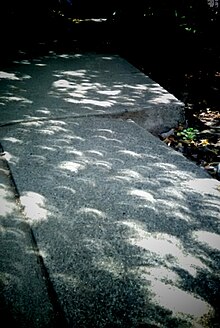

A pinhole is a small circular hole, as could be made with the point of a pin. In optics, pinholes with diameter between a few micrometers and a hundred micrometers are used as apertures in optical systems. Pinholes are commonly used to spatially filter a beam (such as a laser beam), where the small pinhole acts as a low-pass filter for spatial frequencies in the image plane of the beam.[1][2]
A small pinhole can act as a lens, focusing light. This effect is used in pinhole cameras and camera obscura, and in solarigraphy. This effect is also used in pinhole occluders, which are used by ophthalmologists, orthoptists, and optometrists to test visual acuity. The same principle has also been applied as an alternative to corrective lenses: a screen of pinholes is mounted on an eyeglass frame and worn as pinhole glasses.
Besides pinholes made by the point of a pin, precision commercial pinholes are often made by laser drilling through a thin foil.
References[edit]
- ^ "Understanding Spatial Filters". Edmund Optics website. Edmund Optics. Retrieved 13 January 2014.
- ^ "Spatial Filters". Newport website. Newport. Retrieved 13 January 2014.
Well, that’s interesting to know that Psilotum nudum are known as whisk ferns. Psilotum nudum is the commoner species of the two. While the P. flaccidum is a rare species and is found in the tropical islands. Both the species are usually epiphytic in habit and grow upon tree ferns. These species may also be terrestrial and grow in humus or in the crevices of the rocks.
View the detailed Guide of Psilotum nudum: Detailed Study Of Psilotum Nudum (Whisk Fern), Classification, Anatomy, Reproduction